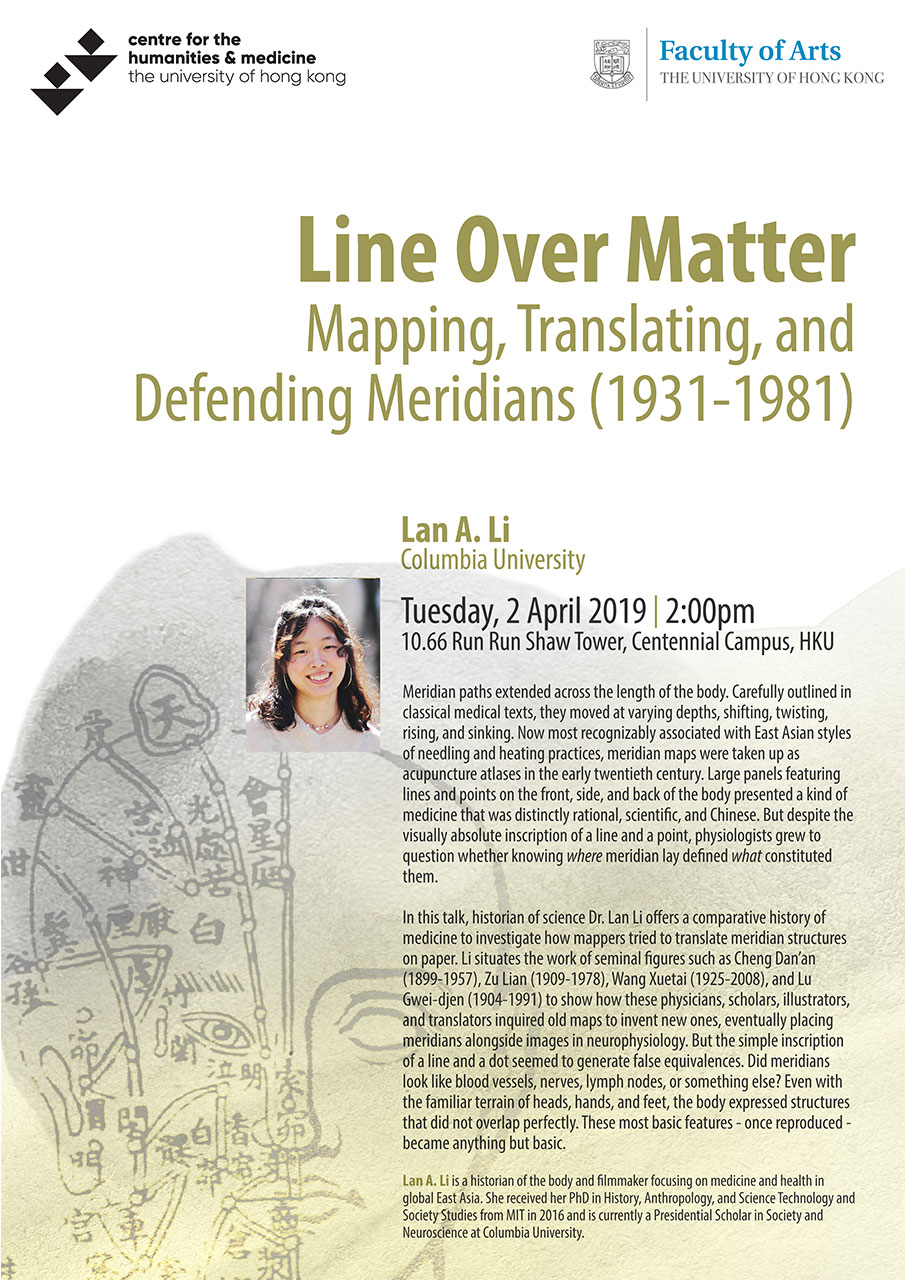| Line Over Matter: Mapping, Translating, and Defending Meridians (1931-1981)
Date: Tuesday, 2 April 2019
Time: 2:00 PM
Venue: 10.66 Run Run Shaw Tower, Centennial Campus, HKU
 Abstract Abstract
Meridian paths extended across the length of the body. Carefully outlined in classical medical texts, they moved at varying depths, shifting, twisting, rising, and sinking. Now most recognizably associated with East Asian styles of needling and heating practices, meridian maps were taken up as acupuncture atlases in the early twentieth century. Large panels featuring lines and points on the front, side, and back of the body presented a kind of medicine that was distinctly rational, scientific, and Chinese. But despite the visually absolute inscription of a line and a point, physiologists grew to question whether knowing where meridian lay defined what constituted them.
In this talk, historian of science Dr. Lan Li offers a comparative history of medicine to investigate how mappers tried to translate meridian structures on paper. Li situates the work of seminal figures such as Cheng Dan’an (1899-1957), Zu Lian (1909-1978), Wang Xuetai (1925-2008), and Lu Gwei-djen (1904-1991) to show how these physicians, scholars, illustrators, and translators inquired old maps to invent new ones, eventually placing meridians alongside images in neurophysiology. But the simple inscription of a line and a dot seemed to generate false equivalences. Did meridians look like blood vessels, nerves, lymph nodes, or something else? Even with the familiar terrain of heads, hands, and feet, the body expressed structures that did not overlap perfectly. These most basic features—once reproduced—became anything but basic.
Bio
Lan A. Li is a historian of the body and filmmaker focusing on medicine and health in global East Asia. She received her PhD in History, Anthropology, and Science Technology and Society Studies from MIT in 2016 and is currently a Presidential Scholar in Society and Neuroscience at Columbia University.
|